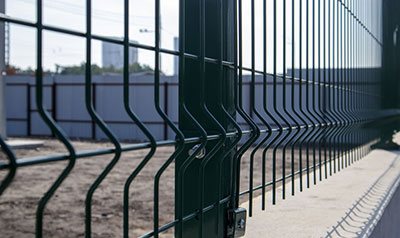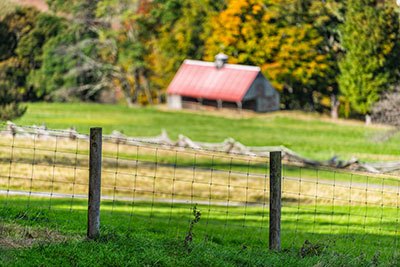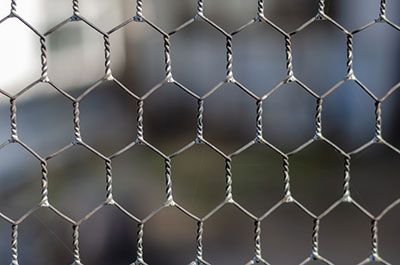Are you looking to make a purchase that involves wire and wondering what type of material suits your needs best? Welded wire and woven wire can both be excellent choices, depending on the application.
This post is here to provide an in-depth comparison of welded wire and woven wire. It’s based on their strength capabilities, cost-effectiveness, durability, corrosion resistance properties, and more. You can make the choice perfect for your needs.
Take away key points:
- The two mesh units have different wire diameter models, so you need to know in advance the right choice for your needs
- Woven mesh is more flexible than welded mesh, and it’s more prone to damage quicker than the welded mesh
- Both mesh systems are ideal for the security and safety of your animals and property, but there are some differences to make you choose a better model
Table of Contents
- Welded vs. woven wire rolled fencing: Choose your fighter!
- Woven wire mesh vs. welded wire mesh: Wire gauges
- Welded wire or woven wire: Corrosion resistance
- Welded wire fence vs. woven wire fence: Durability
- Welded mesh. woven wire mesh: Installation and use
- Woven wire mesh vs. welded mesh: Price points
- Advantages & disadvantages of welded wire mesh
- Advantages & disadvantages of woven wire
- FAQs
- Final thoughts: Welded or woven wire system?
Welded vs. woven wire rolled fencing: Choose your fighter!
If you cannot decide between the woven wire fencing and welded wire fencing system, we will help you. There are pros and cons to both mesh fencing systems, so read the guide thoroughly to know your standards.
Woven wire mesh vs. welded wire mesh: Wire gauges

When it comes to wire gauges, welded wire mesh and woven wire mesh have some distinct differences. Welded wire mesh is typically made with heavier gauge wires than woven wire mesh, making it more durable and stronger. This makes it ideal for applications that require a lot of strength or support.
On the other hand, woven wire mesh is usually made with lighter gauge wires, making it more flexible. This makes it better suited for applications that require flexibility or irregularly shaped objects.
Welded wire or woven wire: Corrosion resistance
Welded wire is made up of a strong welding process and steel mesh holes welded together to create a heavy-duty, rigid, and inflexible structure. The protective caging makes it more resistant to large impacts than the weaving process, which has a linked yet loose structure.
Woven metal cloth may be more flexible than the welding process, but they are not as strong and can be easily damaged by large impacts, without further corrosion resistance. Therefore, if you need a fence that can withstand heavy impacts, then welded wire cloth is the better option.
Welded wire fence vs. woven wire fence: Durability
Regarding durability, welded wire mesh and woven wire mesh have their advantages. Welded wire mesh is a solid, inflexible structure that can withstand large impacts and is less likely to be damaged or bent out of shape.
Conversely, woven wire mesh has a linked yet loose structure that provides more flexibility and can better absorb shock from impacts. This makes it better suited for areas where there are high levels of activity or smaller animals that may try to push through the animal cages.
Both types of fencing are sturdy, rigid, and reliable, but welded wire cloth is best for areas with higher levels of activity and greater force. Their heightened strength makes this wire fencing ideal for perimeter fencing, heavy-duty loads, and industrial applications.
The woven wire cloth is ideal for areas with less activity or animals that may try to push through the fence. The small square fence with fencing wire rolls is not prone to breaking if there is less activity and less pressure to last longer.
Welded mesh. woven wire mesh: Installation and use

Welded wire mesh is made from metal wires that are melted together at the intersections, creating a solid structure that is strong and durable. This type of fence is ideal for areas that require high security, as it is difficult to climb or cut through.
It also provides excellent visibility, making it an ideal choice for properties with pets or livestock. However, the welded mesh can be more expensive than other types of fencing due to the materials and labor required in its construction.
Woven wire fencing is constructed by weaving horizontal and vertical wires together at the intersections. This creates a flexible mesh that can absorb impacts without breaking or becoming damaged.
Woven wire mesh is often used in agricultural settings as it allows animals to see out while still providing containment. It is also relatively inexpensive compared to other types of fencing, making it a great option for budget-conscious homeowners.
Woven wire mesh vs. welded mesh: Price points
Welded mesh is generally more expensive than woven wire fencing due to the increased labor involved in welding the wires together. The woven wire fence is less expensive because it requires less labor to construct.
However, it may not be as strong or durable as welded mesh, which could lead to higher maintenance costs over time.
Ultimately, the choice between woven wire mesh and welded mesh depends on your budget and the specific needs of your project.
Advantages & disadvantages of welded wire mesh
Welded wire fences are a popular choice for many homeowners and businesses, as they provide an effective barrier against intruders.
However, there are both advantages and disadvantages to using this type of wire fencing.
Advantages:
– Welded wire meshes are strong and reliable, making them difficult to breach.
– They can be installed quickly and easily with minimal tools.
– They are relatively low maintenance, requiring only occasional cleaning or repairs.
– They are also cost-effective compared to other types of fencing.
– The mesh design makes it difficult for animals or people to climb over the fence.
Disadvantages:
– The uncoated variety is prone to rusting if not properly maintained.
– Welded wire fencing can be more expensive than other types of fencing due to their strength and durability.
– They may be difficult to shape or bend compared to woven wire fences.
– Installation on sloped or stepped sites may be more challenging than with other types of fencing.
Advantages & disadvantages of woven wire
Woven wire offers a variety of advantages and disadvantages.
Advantages:
– Woven wire is strong enough and resistant to rotting, insect infestation, and other damage that can occur with wood or timber fencing.
– They are also relatively easy to install and maintain.
– Woven wire fence rolls provide excellent visibility, making them ideal for keeping an eye on livestock or property.
– They are also cost-effective roll fence wire systems compared to other types of fencing materials.
Disadvantages:
– Woven wire meshes lack privacy, as they do not block out sound or noise from the outside.
– They require regular maintenance to keep them in good condition.
– Woven wire fences can be damaged by strong winds, which can cause the mesh sheet to become damaged or the fence to collapse.
– They may not increase the value of your property as much as other types of fencing materials.
FAQs
What is the difference between woven and welded wire?
The primary difference between woven and welded wire is the structure of the mesh. Welded wire fencing has a solid and inflexible structure, while woven wire has a linked yet loose structure that allows for large impacts. Welded wire is also heavier-duty than woven wire, making it sturdier and more reliable.
Additionally, the welded mesh is made of spot-welded parallel wires that are crossed together, whereas woven wire mesh is created by weaving alternating vertical and horizontal wires together at each intersecting point.

What is welded wire good for?
Welded wire cloth is good for:
– delineating property lines
– protecting gardens
– keeping animals contained – dog runs, perimeter fences, etc.
– construction projects such as reinforcing concrete structures or creating partitions
– decorative garden accents
– additional security around homes and businesses.
Does welded wire fence need to be stretched?
Yes, welded wires need to be stretched to ensure that it is properly installed and secure. Stretching the fence helps to reduce sagging or gaps between posts and panels, which can weaken the fence’s overall strength and integrity.
It also helps to keep animals from getting through the fence by creating a tighter fit between the posts and panels. Additionally, stretching the fence ensures that it is properly tensioned so that it can withstand wind and other environmental factors.
Final thoughts: Welded or woven wire system?
Both welded and woven fences are ideal heavy-duty options to contain your animals and keep your property safe. Both wire cloth models contain wire mesh design, with mechanical parts, but their wires differ in terms of flexibility: woven wire cloth is more flexible.
Hopefully, you have found all the similarities and differences between the two wire cloth designs and now can make an informed decision about your best solution.
